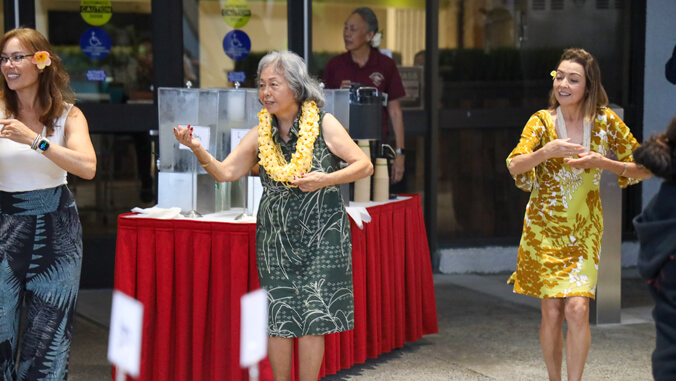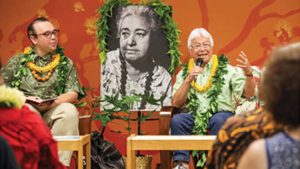

This article by Native Hawaiian Engagement Director at the University of Hawaiʻi at Hilo Pelehonuamea Harman was first published in Ka Wai Ola on May 1.
The United States Mint has honored Native Hawaiian scholar Mary Kawena Pukui on the 2025 Native American $1 coin, recognizing her profound contributions to preserving and perpetuating Hawaiian knowledge.
The coin features Pukui adorned with a hibiscus flower, a kukui nut lei, and a muʻumuʻu, alongside the inscription “Nānā i Ke Kumu,” a reference to the influential book series she co-authored.
As her great-granddaughter, I carry the privilege and kuleana of stewarding her legacy. While this national recognition is deeply meaningful, those who knew her best remember her humility.

“I know Tūtū Kawena would probably blush at all the attention because she was very haʻahaʻa,” reflects one of her descendants. “She documented our culture out of love for her people and because she was genuinely interested in learning.”
On March 28, the University of Hawaiʻi at Hilo—where I serve as director of Native Hawaiian engagement—hosted a panel discussion and kanikapila to celebrate this historic recognition and Women’s History Month. The event brought together scholars, cultural practitioners, and community members to reflect on Pukui’s enduring legacy. The kanikapila honored her musical compositions. Coupled with impromptu hula offered by attendees, the event highlighted many aspects of her contributions.
This commemoration at UH Hilo exemplifies the university’s commitment to bridging academic scholarship with community engagement. By celebrating Pukui’s work, UH Hilo demonstrates the importance of integrating cultural knowledge into education and ensuring that Indigenous traditions remain a vital part of Hawaiʻi’s academic landscape.
Beyond UH Hilo, the Bishop Museum in collaboration with the Mary Kawena Pukui Cultural Preservation Society will continue honoring Pukui’s legacy with monthly programs, beginning with a special After Hours opening event on April 11 and ending in December. These offerings reflect a broader effort to ensure that future generations connect with her scholarship and its lasting impact on Hawaiʻi.
The recognition of Pukui on the 2025 Native American $1 coin is a testament to her invaluable contributions and the importance of linking scholarship with community priorities. Through such efforts, places like UH Hilo play a vital role in keeping Indigenous knowledge relevant, accessible, and deeply connected to the people it serves.

